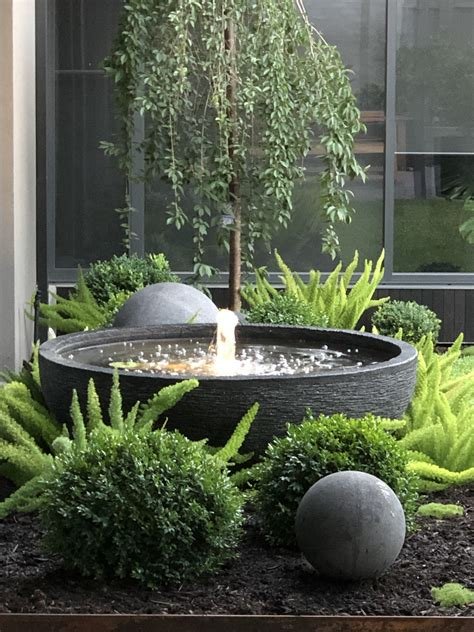Understanding Meditation: A Beginner’s Guide to Inner Peace and Well-Being
In today’s fast-paced and often stressful world, finding moments of peace and tranquility can feel like a luxury. However, meditation offers a simple yet profound way to tap into our inner calm and improve overall well-being. Whether you’re new to the practice or looking to deepen your understanding, this beginner’s guide to meditation will provide you with the essential knowledge and techniques to start your journey towards inner peace.
In this comprehensive guide, we will explore the various aspects of meditation, from understanding its definition to uncovering its many benefits for beginners. We will also delve into practical tips for creating a meditation space, mastering breathing techniques for relaxation, and choosing the right meditation style for your needs. Additionally, we will address common challenges that may arise during meditation and provide strategies for overcoming them.
With this guide, you will gain insight into different meditation styles and their purposes, learn how to incorporate meditation into your daily life, stay focused and mindful during your practice, and track your progress using journaling and meditation apps. Whether you’re seeking stress relief, mental clarity, or a deeper sense of self-awareness, this guide is designed to support you in your meditation journey.
What is Meditation?
Meditation is the practice of training the mind to achieve a state of consciousness that promotes relaxation, concentration, and positivity. It is often associated with mindfulness and involves focusing the mind on a particular object, thought, or activity. This practice has been around for thousands of years and has roots in various spiritual and religious traditions.
One of the key aspects of meditation is to be present in the moment and to calm the constant chatter of the mind. It is about creating a state of inner peace and tranquility, free from the distractions and stresses of everyday life. Meditation can be done sitting, lying down, or even while walking.
There are different types of meditation techniques, such as mindfulness meditation, loving-kindness meditation, and transcendental meditation, each with its own specific focus and approach. However, the ultimate goal of all these techniques is to achieve a sense of mental clarity, emotional stability, and spiritual growth.
Overall, meditation is a powerful tool for improving mental, emotional, and physical well-being. It is an ancient practice that has gained popularity in modern times as a means of reducing stress, enhancing self-awareness, and promoting a greater sense of inner peace and happiness.
Benefits of Meditation for Beginners
When beginning a meditation practice, it’s important to understand the many benefits you can experience. One of the main benefits of meditation is stress reduction. By practicing meditation regularly, you can learn to calm your mind and reduce the effects of stress on your body. This can lead to improved mental clarity and a greater sense of peace and well-being.
Another benefit of meditation for beginners is improved focus and concentration. Through regular practice, you can train your mind to stay focused on the present moment, helping you to be more productive and efficient in your daily tasks. Additionally, meditation has been shown to increase the ability to regulate emotions and enhance self-awareness.
For beginners, meditation can also be a great tool for improving sleep quality. By calming the mind and relaxing the body, meditation can help to promote better sleep patterns and overall restfulness. In addition, meditation has been linked to reducing symptoms of anxiety and depression, making it a valuable practice for overall mental health and well-being.
Lastly, as a beginner in meditation, you may find that it helps to increase your overall sense of happiness and well-being. By taking time each day to practice meditation, you can cultivate a greater sense of gratitude, compassion, and positivity, leading to a more fulfilling and satisfying life.
Getting Started: Creating a Meditation Space
When first embarking on a meditation journey, it’s important to find a tranquil space where you can relax and focus. Creating a meditation space in your home can be a wonderful way to foster your mindfulness practice. Whether you have a whole room to dedicate to meditation or just a small corner, there are many ways to personalize your space to make it as calming and inviting as possible.
Start by selecting a quiet area in your home where you feel comfortable and at ease. This could be a spare room, a cozy nook, or even just a corner of your bedroom. Once you’ve chosen your space, it’s time to consider the layout and decorations. Many people find it helpful to surround themselves with items that promote relaxation, such as candles, cushions, or soft lighting. You might also consider adding elements that inspire you, such as artwork or natural elements like plants or crystals.
Another important aspect of creating a meditation space is minimizing distractions. You may want to consider adding elements to your space that help block out noise, such as curtains or a white noise machine. It’s also a good idea to set boundaries with the other people in your household, letting them know that this is your designated meditation area and should be respected as such.
Overall, the most important thing is that your meditation space reflects your personal preferences and helps you feel at peace. Experiment with different layouts and decorations until you find what works best for you. This dedicated space can serve as a constant reminder to prioritize your meditation practice and make it a regular part of your routine.
Breathing Techniques for Relaxation
When it comes to relaxation, breathing techniques can be incredibly helpful in calming the mind and reducing stress. One effective technique is diaphragmatic breathing, where you focus on breathing deeply into your abdomen rather than shallow breaths into your chest. This method can help to activate the body’s relaxation response, lowering heart rate and blood pressure.
Another useful technique is equal breathing, which involves inhaling and exhaling for the same amount of time. This can help to balance the body’s energy and calm the nervous system. Alternate nostril breathing is also a popular practice, where you use your fingers to close off one nostril at a time, alternating between the two as you breathe in and out. This can help to balance the left and right hemispheres of the brain, promoting a sense of calm and balance.
For those struggling with anxiety, 4-7-8 breathing can be particularly effective. With this technique, you inhale for a count of 4, hold your breath for a count of 7, and exhale for a count of 8. This type of breathing can help to calm the nervous system and reduce feelings of panic and anxiety.
Overall, incorporating these breathing techniques into your daily routine can have a significant impact on your sense of calm and relaxation. Whether you’re looking to reduce stress, improve sleep, or simply find moments of peace throughout your day, breathing techniques are a valuable tool in promoting overall well-being.
Guided vs. Silent Meditation: Which is Right for You?
When it comes to meditation, there are many different methods and techniques to choose from. Two popular options are guided meditation and silent meditation, each with its own set of benefits and drawbacks. Guided meditation involves listening to a teacher or meditation guide who provides instructions and prompts throughout the practice. This can be a great option for beginners or for those who struggle to stay focused on their own. On the other hand, silent meditation involves sitting quietly and focusing on the breath or a mantra without any external guidance. Some people find this to be a more immersive and personal experience, while others may struggle with distractions and inner chatter.
For those who are new to meditation, guided meditation can be a helpful way to learn the basics and establish a regular practice. The guidance provided by an instructor can help to keep you on track and provide a sense of structure. However, as you become more experienced, you may find that silent meditation allows for a deeper level of introspection and self-discovery. Some people also enjoy the freedom and flexibility of silent meditation, as it allows them to tailor the practice to their own needs and preferences.
Ultimately, the choice between guided and silent meditation comes down to personal preference and what works best for you. Some people may find that they benefit from both methods and choose to incorporate a mix of guided and silent meditation into their routine. It’s important to experiment with different approaches and find what resonates with you. Whether you prefer the guidance of a teacher or the tranquility of silent practice, the most important thing is to find a meditation style that helps you to cultivate mindfulness and inner peace.
Whichever type of meditation you choose, remember that consistency and dedication are key. Whether you opt for guided or silent meditation, the most important thing is to make time for regular practice and to approach it with an open mind and a willingness to explore different techniques and methods.
Common Challenges in Meditation and How to Overcome Them
One common challenge in meditation is finding the time to practice regularly. With our busy schedules and constant distractions, it can be difficult to carve out a dedicated time for meditation. However, making it a priority and setting aside a specific time each day, even if it’s just for a few minutes, can help overcome this challenge.
Another challenge is dealing with a wandering mind. It’s natural for thoughts to arise during meditation, but the key is to acknowledge them without getting caught up in them. Using mantras or focusing on the breath can help bring the mind back to the present moment and overcome distractions.
Physical discomfort can also be a challenge during meditation, especially for beginners. Finding a comfortable seated position and using supportive props like cushions or a meditation bench can alleviate physical discomfort and help maintain focus during practice.
Lastly, a common challenge in meditation is feeling frustrated or impatient with the progress. It’s important to remember that meditation is a practice, and progress may not always be immediate or easily measurable. Embracing patience and self-compassion can help overcome the frustration and allow for a deeper and more fulfilling meditation practice.
Different Meditation Styles and Their Purposes
Meditation is a practice that has been around for centuries and has evolved into various styles, each with its own unique purpose and benefits. Mindfulness meditation is one of the most popular styles, focusing on being present in the moment and cultivating awareness of thoughts and feelings. This style is often used for stress reduction and improving mental clarity.
Transcendental meditation is another style that involves silently repeating a mantra, allowing the mind to transcend conscious thinking and reach a state of deep relaxation. This practice is known for promoting inner peace and self-awareness.
Loving-kindness meditation, also known as Metta meditation, involves focusing on sending love and kindness to oneself and others. This style is often used to cultivate compassion, empathy, and a sense of connection with others.
Body scan meditation is a style that involves systematically focusing on the sensations in different parts of the body, often used for relaxation, stress relief, and improving body awareness.
Incorporating Meditation into Daily Life
Many people believe that meditation is something that can only be done for a few minutes a day, in a quiet, peaceful room. In reality, meditation can be incorporated into your daily life in a variety of ways, making it possible to practice mindfulness no matter where you are or what you’re doing. Whether you’re at work, at home, or on the go, there are plenty of opportunities to bring meditation into your daily routine.
One way to incorporate meditation into your daily life is to find moments of stillness throughout your day. This could be as simple as taking a few deep breaths before a meeting, or spending a few minutes in quiet reflection during your lunch break. By making an effort to pause and center yourself throughout the day, you can bring a sense of calm and mindfulness into even the busiest of schedules.
Another way to bring meditation into your daily life is to practice mindfulness during everyday activities. Whether you’re washing dishes, taking a walk, or eating a meal, you can use these moments as opportunities to practice being present and focused. By paying attention to your senses, your breath, and your surroundings, you can turn these routine activities into opportunities for meditation and self-awareness.
Incorporating meditation into your daily life doesn’t have to be a separate, time-consuming practice. By finding moments of stillness and practicing mindfulness during everyday activities, you can bring the benefits of meditation into every aspect of your day, creating a greater sense of peace and presence in your life.
How to Stay Focused and Mindful during Meditation
When it comes to meditation, one of the biggest challenges for beginners is staying focused and mindful throughout the practice. It’s common to get distracted by thoughts, noises, or physical discomfort, but with practice and the right techniques, it is possible to maintain your focus and cultivate mindfulness during meditation.
One effective way to stay focused during meditation is to pay attention to your breath. Deep breathing exercises can help calm the mind and bring your attention back to the present moment. Focus on the sensation of the breath as it enters and leaves your body, and use it as an anchor to prevent your mind from wandering.
Another helpful tip for staying focused during meditation is to set an intention for your practice. Whether it’s to cultivate gratitude, find peace, or simply quiet the mind, having a clear intention can give your meditation purpose and help you stay present throughout the session.
Lastly, practicing mindfulness meditation can also enhance your ability to stay focused during meditation. This form of meditation involves observing your thoughts, sensations, and emotions without judgment, and can help train your mind to become more aware and focused on the present moment.
Tracking Progress: Journaling and Meditation Apps
When starting a meditation practice, it can be difficult to track your progress. Meditation is a deeply personal and internal experience, making it challenging to measure your growth. Journaling and meditation apps are two effective tools that can help you keep track of your progress and stay motivated on your meditation journey.
Using a journal to record your thoughts and experiences before and after meditation sessions can provide valuable insights into your mental and emotional state. By jotting down your feelings, thoughts, and any noticeable changes in your mood or mindset, you can gain a deeper understanding of the impact of your meditation practice on your overall well-being. This can help you identify patterns and trends in your meditation progress over time.
Additonally, using meditation apps can also be a beneficial method for tracking your progress. Many meditation apps offer features such as progress trackers, session timers, and guided meditation recordings. These apps can help you stay consistent with your practice and provide data on the frequency and duration of your sessions. Some apps even offer meditation challenges and goals to keep you motivated and engaged.
By incorporating journaling and meditation apps into your meditation routine, you can gain valuable insights into your progress, stay motivated, and continue to grow in your practice. Whether you prefer the traditional method of journaling or the convenience of a digital app, tracking your progress is an essential aspect of maintaining a successful meditation practice.
Frequently Asked Questions
What is meditation?
Meditation is a practice that involves focusing your mind and eliminating the stream of jumbled thoughts that may be crowding your mind and causing stress. It can promote relaxation, build internal energy or life force, and develop compassion, love, patience, generosity, and forgiveness.
What are the benefits of meditation for beginners?
The benefits of meditation for beginners include reduced stress and anxiety, improved emotional health, enhanced self-awareness, improved attention and concentration, and better sleep.
How can I create a meditation space?
You can create a meditation space by choosing a quiet and comfortable location, decorating it with soothing colors and items, and adding elements such as candles, cushions, and essential oils.
What are some breathing techniques for relaxation during meditation?
Breathing techniques for relaxation during meditation include deep belly breathing, equal breathing, and alternate nostril breathing.
What are common challenges in meditation and how can they be overcome?
Common challenges in meditation include a wandering mind, discomfort, and lack of time. They can be overcome by practicing patience, using guided meditations, and setting a regular schedule.
What are different meditation styles and their purposes?
Different meditation styles include mindfulness meditation, loving-kindness meditation, transcendental meditation, and chakra meditation. Each style has its own specific purpose and benefits.
How can I incorporate meditation into my daily life?
You can incorporate meditation into your daily life by setting aside a specific time for practice, starting with short sessions, and integrating mindfulness into everyday activities such as walking, eating, and working.
How can I stay focused and mindful during meditation?
You can stay focused and mindful during meditation by using anchors such as the breath, body sensations, or sounds, and gently bringing your attention back whenever it wanders.
How can I track my progress in meditation?
You can track your progress in meditation by keeping a meditation journal, using meditation apps for guided sessions and progress tracking, and reflecting on your experiences and insights.






